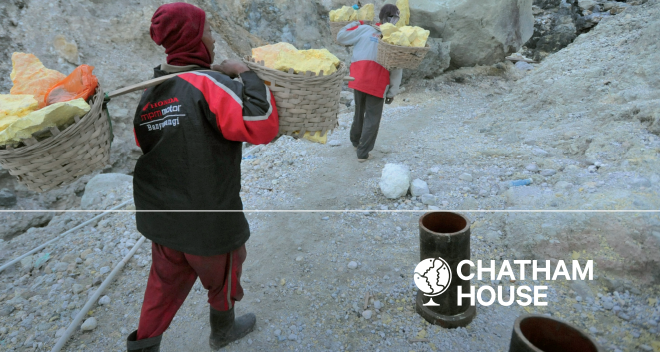The Just Transition Towards Circularity
By Ellen Salter
November 2020
The concept of the circular economy is not new. As Jessie Shepherd highlights in ‘A Circular State of Mind’, embryonic circular schools of thought can be traced back to as early as 2,500 years ago through Aristotle’s position on the Good Life. From then until now, circular economy models have demonstrated the unsustainable nature of our production and consumption patterns synonymous with the degradation of our natural world. Such models crucially draw synergies between environmental degradation and economic depletion. Yet, the social/human dimension often remains neglected. This article attempts to explore this neglected lens and its role in the just transition towards circularity.
In recent times, the concept of the ‘just transition’ has received increasing attention in the academic literature and in popular media. The term, rising to fruition in the 1990s, refers to the movement towards a more sustainable economy in a way that’s fair to everyone regardless of, but not limited to, spatial, temporal, political and socio-economic factors.
Following the 2019 Climate Emergency Declarations and the 2020 European Green Deal (amongst other notable milestones), the ‘low-carbon transition’ has entered popular parlance. The movement equipped with increasing calls for net zero decarbonisation route maps, economic support for divestment from fossil fuels, and the establishment of Science-Based Targets across a multitude of sectors. Such a transition is not without complexities however – positing technological, political, generational, and financial questions amongst others.
In his 2020 paper, Schröder draws attention to the similarities (and challenges) between the transition from a linear economy to a circular model with that of a low-carbon transition. According to Schröder (2020), principles of fairness, justness and social equity are as integral to the transition towards circularity as they are for the realisation of a low carbon, climate-positive future. Incorporating principles of justice and equity remains difficult yet necessary; however, especially where such considerations are all too frequently omitted from the discourse.
So, how can we assert the social dimension of circularity into the discourse? In the next part of this article, I outline 8 key principles for the just transition toward a circular economy.
8 Key Principles for Circularity and The Just Transition
N.B – The principles highlighted below are not exhaustive nor apply to bespoke contexts. It is important at the onset of transition planning consider the local context including geographical, political, socio-economic, and technological considerations and modify all principles (these or otherwise) to the specific nature of the desired outcome.
Identify all your relevant stakeholders - Inclusion and exclusion are key components of both climate justice and the circular transition. It is integral that all stakeholders, particularly those adversely affected by the transition, are included in the discussion. All stakeholders should conduct a peer review to look for those omitted and further opportunities for engagement – Does everyone have a seat at the circle?
Once identified, ensure that all stakeholders are involved in the decision-making process at key milestones and afforded the opportunity to not only have their rights recognised but accounted for.
Choose an inclusive assessment methodologies – Does the circular assessment tool account for social value, human rights, and justice?
Draw upon internationally recognised frameworks and embedding principles into a bespoke assessment framework including, but not limited to, the United Nations Sustainable Development Goals (particularly UN SDG 12 and those with social lenses); the Social Value Portal; and other holistic frameworks.
Consider the costs and benefits of the current linear system – How are these distributed? What are the opportunities and challenges?
Consider knowledge, lessons learned and skills mapping – Do all stakeholder possess relevant capabilities and skills to participate in the circular economy and contribute their ideas? How can members of the community be upskilled and supported?
Account for, review and advocate for well-designed circular policy with social/justice considerations (see the EU’s updated Circular Economy Action Plan of 2020 and the New London Plan’s circular policies etc.)
Review, Review and Review again – The transition towards circularity is never finished. Continually review your approach/processes and re-engage stakeholders. What are the successes and the lessons learned? How can social value and human rights considerations be improved upon?
It is clear that the transition towards a circular economy requires a profound systemic transformation, and one that is not without complexities. However, when considered holistically, this transition can promote sustainable consumption and production patterns. By accounting for principles of justness, inclusivity, and equity the circular economy can be realised through resource efficient processes, social equity, employment and skills opportunities, and a better quality of life for all.
Return to Human Rights & Wrongs
You May Also Be Interested In: A Circular State of Mind, The First Value: Embedding Climate Justice within the Built Environment and The City and I: The Role of The Community in The Climate Emergency
References:
https://www.sciencedirect.com/science/article/pii/S0016718517303287
https://www.greenpeace.org.uk/challenges/just-transition/
https://www.chathamhouse.org/2020/04/promoting-just-transition-inclusive-circular-economy
https://www.sciencedirect.com/science/article/abs/pii/S0921344920300082
https://sdgs.un.org/goals
Jessie Shepherd (2020) - A Circular State of Mind
© 2020 Climate Just Collective


